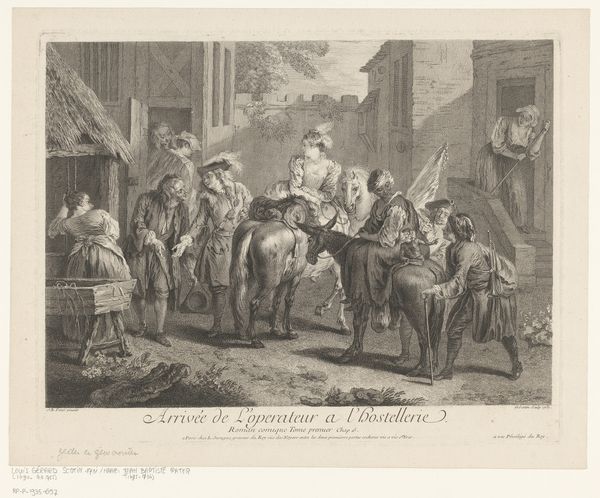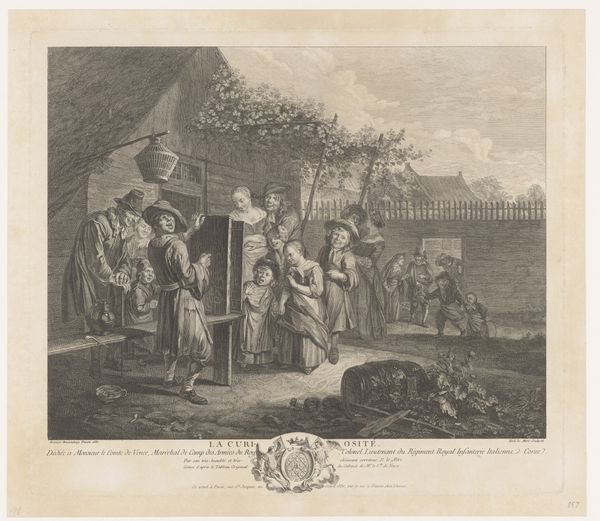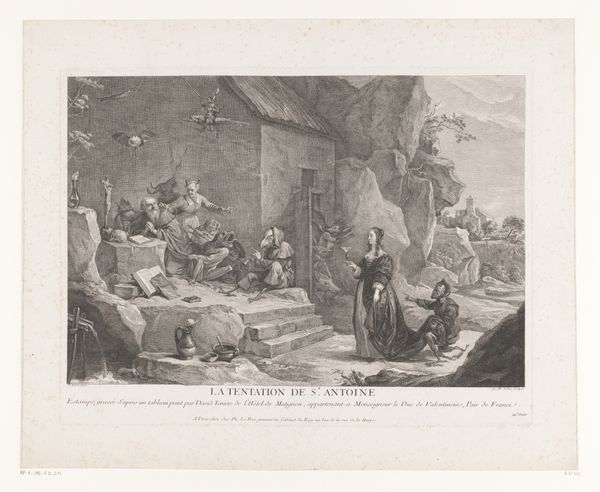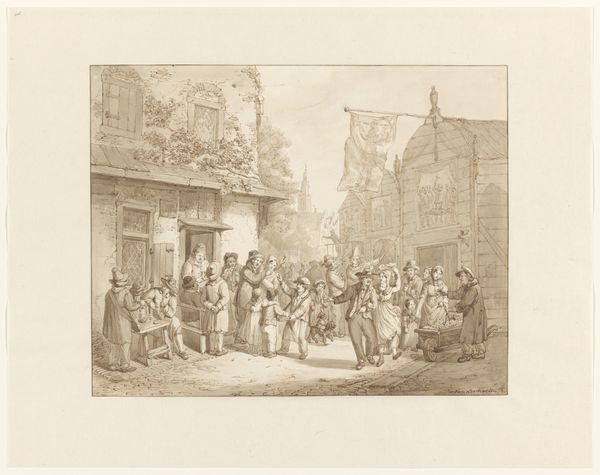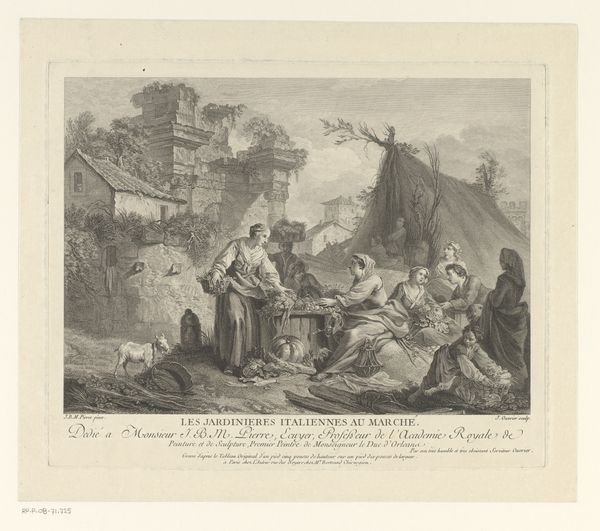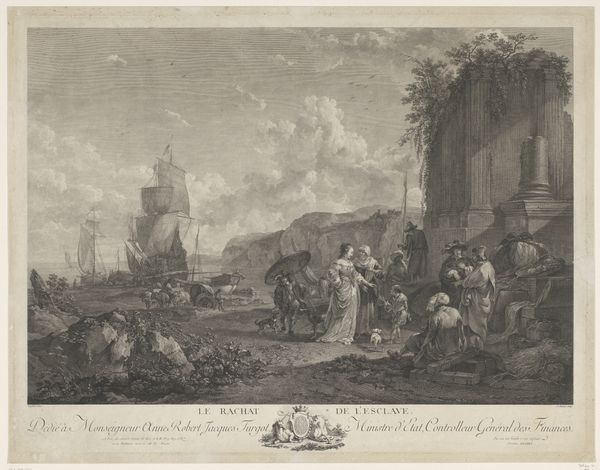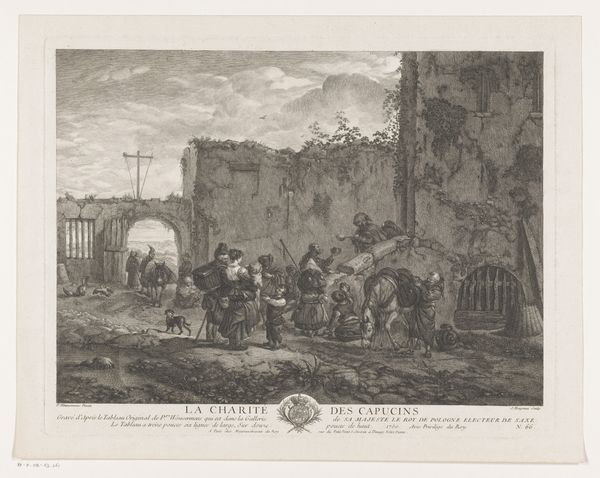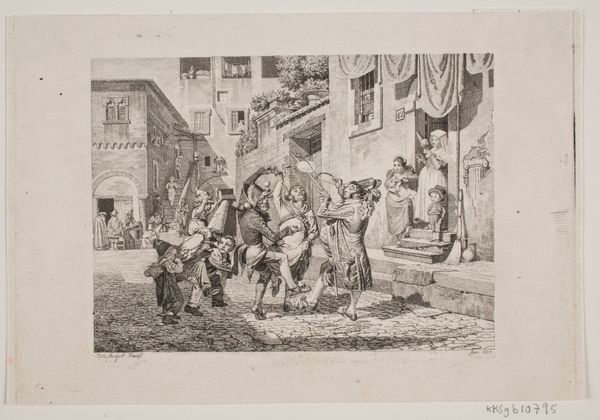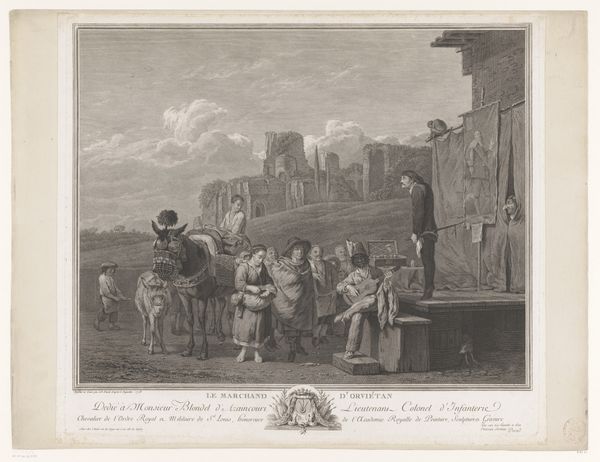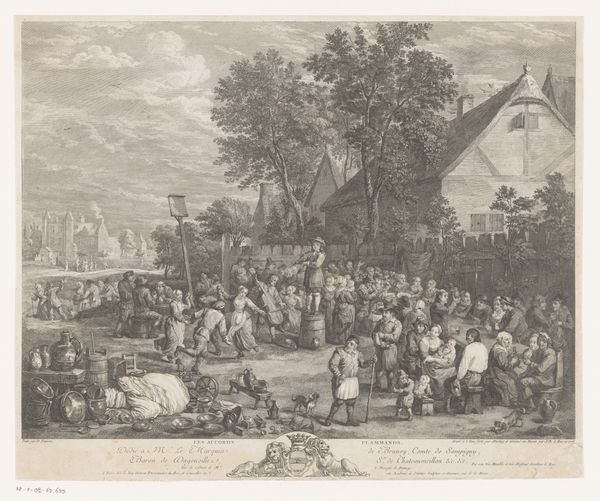
print, engraving
#
allegory
#
baroque
# print
#
figuration
#
line
#
genre-painting
#
history-painting
#
engraving
#
realism
Dimensions: height 504 mm, width 605 mm
Copyright: Rijks Museum: Open Domain
Curator: Ah, there's something deeply comforting, almost like a worn, favorite coat, in the scene unfolding in Jacques Philippe Le Bas’ engraving from 1747, "The Seven Works of Mercy." What impressions rise to meet you? Editor: It feels like organized chaos, but beautiful. There’s so much happening, my eye doesn't quite know where to land first! A little overwhelming. Curator: Le Bas really knew how to capture human texture. Look at the composition—the architecture seems to anchor the scene and lends structure to the crowd gathered, no? And those people! They are caught between shadows and light, they are dynamic, moving around to help one another in the landscape. Editor: Absolutely. Notice how he’s used line and shadow. The linear style creates distinct figures, while the engraving technique overall adds dimension that enhances that baroque realism. What truly sings is the architectural structure grounding what otherwise might seem simply as ‘genre-painting.’ Curator: It’s hard to see that, though, when our attention is instantly pulled to the figures performing these acts of kindness—feeding the hungry, clothing the naked, and the like. Each work of mercy gets its own little spotlight within the broader picture, kind of nested like Russian dolls. I wonder about that structure within the crowd – how intentional it must be. What do you imagine that structure achieves? Editor: It's all so calculated, isn't it? To have a specific spot for each good deed... What’s particularly baroque about Le Bas' take on 'history-painting’ lies in his strategic employment of the picture plane as a stage to convey and evoke emotion—very effective for such a mundane scene of benevolence. It emphasizes virtue via accessible daily experiences, rather than relying on heroic narratives for moral didacticism, yes? Curator: Precisely! In these faces, this is virtue as commonplace, mercy as lived experience. Each interaction—a hand reaching out, an eye meeting another—becomes a verse in a larger poem about compassion. It is all like fragments of lived, experienced human stories, isn't it? Even though the formal style keeps it at a cool distance, for me. Editor: It is thought-provoking, indeed! Thank you, this engraving has opened up new lines of inquiry.
Comments
No comments
Be the first to comment and join the conversation on the ultimate creative platform.

